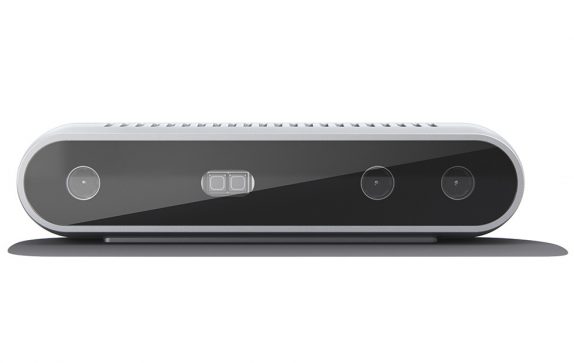
Intel today introduced the RealSense D415 and D435 depth cameras in the D400 Cameras series. The depth cameras add 3D capabilities to any prototype or end user-ready device or machine. It is powered by the D4 vision processor.
The Intel RealSense is idle for educators, hardware prototyping, and software development. The new depth cameras come with a USB-powered form factor paired with D400 camera series. It is powered by the new Intel RealSense vision processor D4 for processing complex depth data in real time. The RealSense D415 and D435 depth cameras are supported by the Intel RealSense SDK 2.0 which is available for the first time as a cross-platform.

The company says that the camera can be used indoors or outdoors and in any environments. Applications for a range of computer vision uses advancements across VR/AR, robotics, drones and more. it not just adds new levels of depth for real-time feedback, but will also make the devices more intelligent and enable’s new experiences.
The Intel RealSense Software Developer Kit with Intel RealSense viewer is now available to developers, allowing OEMs/ODMs and system integrators to unlocking new depth data with access to the depth camera to tackle everything from viewing the depth stream, visualizing 3D point clouds recording.
The Intel RealSense D415 and D435 Depth Cameras, are available now to order for $149 (Rs. 9,500 approx.) and $179 (Rs. 11,420 approx.), respectively.
Commenting on the new 3D cameras, Sagi Ben Moshe, vice president and general manager of the RealSense Group at Intel said:
Many of today’s machines and devices use 2D image recognition-based computer vision, but with Intel RealSense’s best-in-class depth technology, we are redefining future technologies to ‘see’ like a human, so devices and machines can truly enrich people’s lives. With its compact, ready-to-use form, the Intel RealSense D400 Depth Camera series not only makes it easy for developers to build 3D depth sensing into any design, but they are also ready to be embedded into high-volume products.
